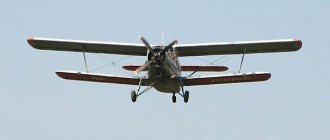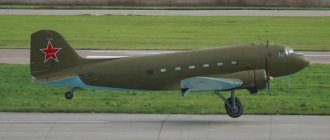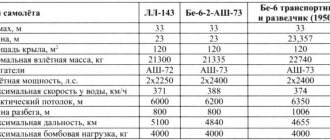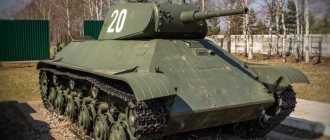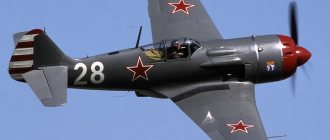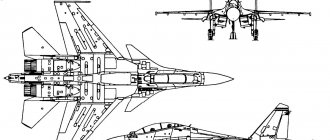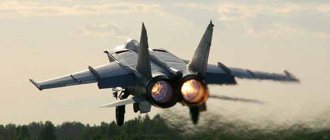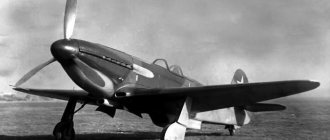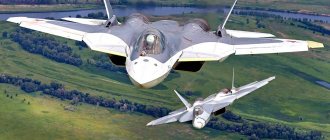The general designer of OK Antonov said about this aircraft in 1983: “The An-2 is my greatest success.” In 1947, a small team managed to create not only an excellent, as OK Antonov said, “a flying agricultural machine”, he created an aircraft that has been in mass production longer than any other aircraft in the world. Over 54 years, about 17,000 copies of the An-2 and its modifications were produced in three countries - the USSR, Poland and China.
An-2 aircraft - video
The very first project of a short take-off and landing aircraft called “Airplane No. 4” was developed by OK Antonov in 1940. The prototype for it was the LIG-10 multi-purpose machine, built by A.G. Bendukovich in 1937. The aircraft had the same biplane design, but with a three-tail tail. However, in February 1941, experts from the Air Force Research Institute rejected it, mainly due to its low flight speed. During the difficult war years, while working on the creation of high-speed fighters (in 1943-1945, Antonov was the first deputy of A.S. Yakovlev), he continued to nurture his idea.
In August 1944, taking into account the wishes of the First Secretary of the Central Committee of Ukraine N.S. Khrushchev, Antonov converted his project into a biplane cargo aircraft, to which he gave the name “Vezdelet”. At the beginning of 1945, he showed his project to A.S. Yakovlev, but the boss then refused, saying that “this car is not his profile.” In January 1946, Antonov again turned to A.S. Yakovlev, then Deputy People's Commissar of the Aviation Industry, and he, having studied the project, agreed to its construction. On March 6, an order was signed to organize a new OKB-153 headed by OK Antonov. The same order spoke about the creation of a cargo aircraft with an ASh-62IR engine.
At the beginning of 1947, its full-scale mock-up was built, and the aircraft received the designation CX-1. The aircraft was built in Novosibirsk at a rapid pace, and at the end of July the biplane was ready. To perform the first flight, it was necessary to obtain a TsAGI conclusion on aerodynamics and strength. But many TsAGI employees simply did not want to work on this “Wright brothers’ plane.” Only the intervention of Antonov himself made it possible to resolve this issue. On August 31, 1947, the CX-1 aircraft made its first flight, piloted by test pilot of the Civil Air Fleet Research Institute P.N. Volodin. To conduct state tests at the Civil Air Fleet Research Institute, the aircraft flew under its own power with several landings to the Moscow region. After state tests, the aircraft, called An-2, is put into production at the Kiev plant. The first production device was built in August 1949.
The operation of the An-2 began rapidly, and in several areas of the national economy of the USSR at once, but it found its most widespread use in agriculture. These works included fertilizing plants by adding mineral fertilizers to the soil, controlling pests by spraying pesticides, servicing livestock by sowing forage grasses, etc. Currently, there are about 3,500 An-2s of various modifications all over the world in airworthiness. The An-2 and its numerous variants are widely used on the planet; they fly in more than 50 countries around the world. The aircraft was mass-produced in Poland and China. 11,915 copies of the An-2 were built in Poland, the peak of production was in 1973 - 600 vehicles! On the basis of the An-2, many modifications were built: passenger, agricultural, ambulance, transport and landing, forest fire, etc. Several experimental modifications have been created: an artillery fire spotter aircraft, an aircraft armed for operations against ground targets, and an atmospheric sounder aircraft.
Content
- 2 Which documentation is better to use?
- 3 ATTENTION!
Service device - 4 Are there any alternative panels, liveries?
- 5 Can't start the engine?
- 6 We managed to start the engine, but after takeoff it stops after a minute or two. Why?
- 7 What should be the positions of the “GAS” (boost) and “Screw” (screw pitch) levers?
- 8 Are there any general recommendations for piloting the An-2?
- 9 How to turn on and configure the radio compass?
- 10 It’s hard to be distracted by navigation without an autopilot.
Photo of An-2
We managed to start the engine, but after takeoff it stops after a minute or two. Why?
answer
Most likely you do not monitor the temperature conditions of the engine; the consequences of its overheating are implemented in the model.
- The temperature of the cylinder heads is adjusted manually (via a toggle switch) by the hood flaps. Their position is controlled visually (on the left, behind the windshield). Before takeoff, open the doors a little, and then according to the readings of the cylinder temperature sensors;
- The oil temperature is regulated manually (via a toggle switch) by the oil cooler flaps. The position is controlled by an indicator on the central console next to the flaps
- Limitations of engine temperature conditions Engine cylinder head temperature: normal in flight - 120 - 215 ° C,
- recommended for cruising modes - 165 - 200 ° C,
- maximum permissible during takeoff for 5 minutes and during climb for 15 minutes 245 ° C;
- minimum permissible - not lower than 50 ° C,
It is also necessary to maintain the temperature of the mixture in the carburetor at least 10 degrees (there is a lever on the central console), otherwise there is a danger of the engine stopping at low temperatures outside.
Date of release and modification
Aircraft CRJ 200
The chronicle of the AN aircraft begins even before the war, at the beginning of the 40s of the last century, when Antonov received the task of creating an aircraft of a simple design to solve primarily agricultural problems (pest control for crops), similar to German biplanes, designed to replace the outdated lightweight PO-2. He had to perform other military transport work as well. Requirements were put forward for the capabilities of the new machine: to land and take off from any surface, be it soil or even forest clearings. In terms of technical operation, such an aircraft should have been simpler than expensive helicopters and also unpretentious in terms of maintenance and operating conditions. Due to the war, the start of development had to be postponed until 1946. The AN2 made its first test flight in 1947, covering 3 thousand kilometers.
The aircraft has many modifications that allow it to perform work in different areas and climatic conditions:
- An-2C – ambulance transportation;
- An-2SKh - for agricultural tasks (mainly spraying crops against pests, for which it received the nickname “corn farmer”);
- An-2T – transport transportation (capable of taking on board about a ton of cargo);
- An-2TP – transports both cargo and passengers;
- An-2TD – designed for landing troops, as well as civilian paratroopers (with a retractable platform);
- An-2F - equipped for aerial photography, also conducts artillery reconnaissance at night, equipped with a cabin for a navigator in the tail, the engine and cabin are covered with an outer layer of armor;
- An-4 - an aircraft with the ability to splashdown;
- An-6 – carries out meteorological reconnaissance;
- An-2 – for cartographic surveys (with built-in cameras);
- An-2 – for radiation (with an X-ray meter) and geological exploration (with a magnetometer);
- An-2 – for rescue operations (with a hatch in the floor and a rail trolley);
- An-2L - for extinguishing forest fires (with containers for fire extinguishing mixtures);
- An-2M - for agricultural work with a long fuselage;
- An-2P - for transporting passengers;
- An-2S sanitary - can take on board 6 bedridden patients (there are special stretchers) and 2 accompanying persons, equipped with a thermal insulation system, a first aid kit and a toilet;
- An-2E ekranoplan;
- An-2PK – for work in polar conditions (equipped with a ski chassis and additional heating capabilities).
Over the entire production period, more than 18,000 copies of the AN2 aircraft were assembled; they performed their tasks in several dozen countries.
What should be the positions of the “GAS” (boost) and “Screw” (screw pitch) levers?
answer
Boost is regulated by throttle, propeller pitch is regulated by throttle. The ratios of boost and rpm values are given in the Flight Manual.
- set with the best speed 130-140 km/h, boost 700-900, rpm 1700-2100;
- in flight - according to the cruising schedule
given in the Flight Manual; - minimum flow rate, circle - 600/1600 (before TVG, 500/1500 is possible);
- reduction by 1500 rpm, boost 400-630, speed 160-200 km/h;
For cruising mode, they sometimes use the “1000 rule” - engine speed is 1000 more than boost. For example, speed is 1600, boost is 600 (1600-1000
=600)
In real life, it is important not to forget about the rules for changing power through throttle and control levers. The Flight Manual (link) instructs to regulate engine power in the following order:
- to reduce power
: reduce boost pressure (boost pressure); - reduce the engine shaft rotation speed (RUV);
- adjust the boost pressure (boost pressure).
:
- increase the engine shaft rotation speed (RUV);
It’s hard to be distracted by navigation without an autopilot.
answer
In real conditions, An-2 aircraft are not equipped with an autopilot; you can only transfer control to the second pilot. You can still use the autopilot on the An-2 in the simulator. To do this, find the [Autopilot] section in the Aircraft.cfg file and replace “0” with “1” in the Autopilot_Available=0 line. After this, when you press the [Z] key (default), the autopilot will turn on in the roll and pitch mode. To switch the autopilot to the current altitude mode, press [Ctrl]+[Z] (default). The autopilot is turned off by pressing the [Z] key again, and a characteristic sound signal is played. Special thanks to Viktor Laktyushin for this tip.
| This is a work in progress. You can help the project by correcting and expanding it. |
Guardians of a unique union
In the year of the 120th anniversary of designer Arkady Shvetsov, another significant date awaits us - 65 years since the first flight of the An-2 aircraft with the ASh-62IR engine. We met with specialists from the Shakhty Aircraft Repair Plant (SARZ) to discuss the current state of the aircraft and engine fleet and repair features
and exploitation of the “Swedish star”. Our interlocutors were the general director of the plant, Georgy Alekseevich GARKOVETS, the deputy general director for quality, Maxim Vladimirovich KARNAUKHOV, and the leading engineer-technologist for aircraft engines, Pavel Vyacheslavovich SKREBETS.
– Serial production of the ASh-62IR engine began in 1937. An-2 was released in 1949. What is the secret to the longevity of this engine and aircraft?
Georgy Garkovets: – The initial design strength calculations provided it with a large margin of strength and reliability. When developing the ASh-62IR and its modifications, it was taken into account that it would be installed on a multi-purpose aircraft and should have high acceleration. Therefore, the design of the engine included all the shafts in the drives to the units with provided shear couplings, etc., to ensure its durability. For the first time, a single-stage supercharger was used on the ASh-62IR. With its help, the engine became high-altitude, the An-2 was able to rise to 4,500 m. And an unlimited resource? The assigned service life of the AS?62IR on civil aviation aircraft is 6,000 hours, on state aviation aircraft - 4,800. These figures are significantly less than its real capabilities.
Maxim Karnaukhov: – The serial manufacturer of the ASh-62IR until the early 70s was the Voronezh Mechanical Plant. In the USSR, 15 engine series were created. Then all rights to the An-2 engine and aircraft were transferred to Poland. SA specialists have modernized the engine, equipping it with an electronic fuel injection system that replaces the carburetor. Now the assigned service life of the new ASh-62IR engine is 6,200 hours, the service life between overhauls before the first major overhaul is 1,400 hours, the service life between overhauls until the second and subsequent overhauls is 1,200 hours, provided that it is operated on Aeroshell oil or its analogues. Designated and overhaul engine resources do not have calendar dates, only flight hours. And all this modernization became possible only thanks to the unique design of the engine.
Pavel Skrabets: – The An-2 aircraft and its engine are also unique in that they do not require an extensive service network. The main thing is that you have a good and non-lazy technician who will constantly monitor the condition of the engine and the aircraft. The recipe for successful use of an engine is simple: do not skimp on high-quality oil and gasoline, understand its design, and the car will work well, constantly and in any conditions. The ASh-62IR has a very large margin of reliability and durability. Of course, not endless, but the engine is very thoughtful. He can work not the six thousand hours assigned, but all ten thousand. If you understand that in order to save resources and, accordingly, money for repairs, operating hours are kept in general aviation and especially in the federation of aviation enthusiasts, which is not always objective, then that is how much the ASh-62IR actually flies. Engines that come to us for repairs easily reach two service life between overhauls.
– Which series of engines are most commonly used today and most often come to you for repairs?
Georgy Garkovets: – Mostly 16 series of Polish manufacture. No more than 10 percent of Voronezh engines remain. These are statistics not only for our enterprise, but also for Russia and the CIS countries in general.
– Besides the electronic fuel injection system, are there any other differences between the 15 series engines produced in Voronezh and the 16–18 series engines produced in Poland?
Georgy Garkovets: – The main difference (apart from minor design changes) is the aggregate part. On the ASh-62IR series 16, the Poles installed a centrifugal oil purification filter at the engine outlet and a filter signaling chips in the oil.
– What diagnostic methods are provided on the ASh-62IR engine?
Maxim Karnaukhov: – In general, for engines of both Voronezh and Polish assemblies, the control methods are identical. But WSK PZL-Kalisz has expanded the range of parts and assemblies subject to magnetic particle, luminescent non-destructive testing methods, as well as X-ray gammography, optical-visual and micrometric. In general, engine repair technology involves monitoring 112 positions of parts and assemblies using non-destructive testing methods.
– What are the main defects of the ASh-62IR?
Maxim Karnaukhov: – ASh-62IR is already more than 60 years old. During this time, all the main defects have already been taken into account and described. What is new is the consequences of switching the engine to run on motor gasoline. As a rule, state aviation organizations use imported gasoline of the AVGAS-100LL or B-91/115 brands. Their cost is high. The State Scientific Research Institute of Civil Aviation, having analyzed our existing grades of motor gasoline, allowed controlled operation of the engine at AI?95 produced by only four plants: in Ryazan, Novokuibyshevsk, Ufa and Perm.
Georgy Garkovets: – Controlled operation on motor gasoline means that after the first 100 hours of flight time, the upper cylinder is dismantled and its technical condition is determined: the presence of gas corrosion, destruction, increased wear. The commission then decides whether to allow the aircraft to continue operating for another 100 hours or not.
– What kind of defects appear when using AI-95?
Maxim Karnaukhov: – Firstly, gas corrosion of the piston crown. As a rule, the upper cylinders - 1, 9, 8 - begin to burn. Then, if overheating occurs, the entire “star” begins to burn out. Secondly, the exhaust valve chamfer burns out, which leads to a drop in cylinder compression and, accordingly, engine power. Therefore, special attention must be paid to compression in the cylinders and constantly clean the exhaust valves from carbon deposits. For example, the instruction of the Department of Aviation of DOSAAF of Russia prescribes monitoring the compression of the cylinders of an engine approved for operation on motor gasoline every 25 hours of operation with making entries in the engine log.
It is necessary to refuel aircraft only in compliance with the requirements of the current instructions for organizing the storage and provision of refueling of aircraft fuels and lubricants, and ensure multi-stage filtration of fuel without relying on filters installed in the aircraft fuel system. And of course, on airplanes and engines that have not undergone major overhauls since the beginning of 2000, problems may arise with seals made of rubber compounds, as well as with the floats of SBES gasoline sensors, which are expressed in the loss of physical and chemical properties of the material, deformation, destruction in aggressive environment AI-95. These defects, which arose at the very beginning of the controlled operation of An-2 aircraft on motor gasoline, were successfully resolved, including by replacing materials.
– Maybe there are some age-related “diseases” of the ASh-62IR engine?
Maxim Karnaukhov: – There are still unrepaired defects that appear from time to time, for example, the appearance of cracks in the rear part of the middle crankcase. The most loaded crankcase part is connected to the front housing of the supercharger, and in this place fatigue cracks appear along the mounting holes, along the connecting areas, and in the crankcases. If we talk about the power part of the engine, the design improvements made over its long life practically eliminate recurring defects. The ASh-62IR crank mechanism is quite strong; it’s good that it allows for the replacement of the main connecting rod bushing. Piston and crank head bushings typically show minimal wear, and the oval is always within tolerance. Regarding the unit drives, the issue has been completely removed. These are isolated cases when some drive or shaft wears out. Including chipping on the contact surfaces of gears and gears. These are also isolated cases.
The weakest point is the starting system. Even with proper operation, they still manage to burn out the electric motor of the electric inertia starter. There are cases of destruction of the bell gear shaft in the gear part of the starter, because operators do not carry out preparatory work before starting: draining oil from the intake pipes, removing spark plugs from the combustion chambers of the lower cylinders, etc. Trying to save time, they lead the engine and the aircraft to deplorable conditions. state. The most common operational defect is stuck exhaust valves. Due to the fact that intense carbon formation occurs between the guide bushing and the rod, the valve does not ensure the mobility of the guide bushing and begins to hang in the open position. Due to loss of compression, the cylinder stops working, the engine’s power, speed, etc. sharply decrease.
– How is the repair of the ASh-62IR organized? What is the capacity of the engine repair shop?
Georgy Garkovets: – The throughput capacity is technologically calculated, but much depends on the number of orders, on the number of employees, on the provision of spare parts and materials, on the rhythm of deliveries of everything necessary. Over the 11 years that we have been repairing ASh-62IR, the maximum number of repaired ASh-62IR engines per month is 10 engines. The seasonality of orders also plays a role. All companies involved in agricultural chemical work on the An-2 prefer to repair their equipment before February in order to be fully armed by spring. Therefore, in the autumn-winter period there are a lot of orders from “chemists”. The State Aviation Administration, aviation enthusiasts, civil aviation schools, and the Ministry of Emergency Situations are repaired throughout the year.
Pavel Skrabets: – The technological cycle of engine repair lasts about two weeks, taking into account the fact that other engines are in operation. The schedule is quite strict: two days for each operation. For repairs, the engine must arrive to us complete, repairable, preserved, and packaged in decent containers. Unfortunately, all these requirements are not always met. Before disassembly, pipelines are connected to the engine to flush the internal cavities with kerosene, remove excess oil, etc. This is a more environmentally friendly way of working, since it eliminates spills of oil and other liquids. Then the engine is disassembled, its components are washed and cleaned. Unfortunately, this process has undergone few changes, a lot of manual labor, since such heavy deposits can only be cleaned with hands and a brush.
The factory has a machine for cleaning stone chips. We use apricot kernel crumbs as an abrasive. Applied under pressure, it perfectly cleans parts without damaging their galvanic layer. But the list of parts and assemblies that need to be cleaned with stone chips is significantly limited by the technological possibility of plugging and protecting oil channels.
Maxim Karnaukhov: At the flaw detection stage, micrometric testing of parts, their optical-visual inspection and research using non-destructive testing methods are carried out, which make it possible to identify heterogeneity of the metal and cracks emerging on the surface. X-ray gammography reveals internal heterogeneities. Recently we encountered a unique defect - destruction of the base of the hub by the cam of the washer. This has not happened for the last 40 years. The reason has not yet been identified; we are consulting with all repair companies in the country. In general, all factories that repair ASh-62IR constantly exchange information and share their best practices.
Pavel Skrabets: – After defect detection, components and parts to be restored are distributed among repair areas. At the maintenance site, the engine is prepared and attached with attachments for bench testing and installation on the aircraft (if the engine was delivered not alone, but complete with the aircraft).
-Is it convenient to repair the engine? Do you need a lot of additional devices and non-standard equipment?
Maxim Karnaukhov: – The engine is quite comfortable. To work with it, of course, special keys and non-standard equipment are required. We make it ourselves, we buy on-board bags for operators in Poland, Voronezh.
– Where does SHARZ get spare parts from?
Georgy Garkovets: – We buy the most critical parts and those that are not produced in Russia in Poland. The main items are steel and cast iron piston rings of repair sizes. All oil seal rings installed in the propeller control channel, as well as in the labyrinth seals of the engine gearbox and supercharger mechanisms. The smooth operation of the engine and propeller depends on the condition of these rings and the condition of the fixed gear of the gearbox and the oil spacer sleeve.
In Poland we purchase main connecting rod bushings and gas distribution cam washers. We purchase all joining gaskets from the Chekmagushevsky Mechanical Plant (Bashkiria). Recently, Polish manufacturers notified all repair enterprises in Russia and the CIS countries that we must purchase up to 70% of parts and components from them to guarantee the quality of equipment repairs. But this means a huge financial investment. And we must take into account the interests of our customers, who must bear the maximum allowable costs for repairs.
– How long do you think the ASh-62IR will operate as part of the An-2 aircraft?
Georgy Garkovets: – The ASh-62IR engine of the 18th series, equipped with an electronic fuel injection system, has become 30% more economical and much more powerful. This series is in great demand all over the world. If such engines enter the Russian market, the An-2 will fly for a very long time, since the airframe itself does not have a designated resource. With today's average An-2 flight time of approximately 300 hours per year, this will be enough for decades in the mode that airlines can afford today. Russian-made ASh-62IR have gone through several repairs, so they have a TBO of only 800 hours. It would be possible to increase it if operators used Aeroshell oil, which provides little wear to the cylinder-piston group, less intense carbon formation, etc.
Maxim Karnaukhov: In my opinion, domestic enterprises need to improve the ASh-62IR, work out all the components thoroughly, and modernize the engine. But where to get the money? All rights reserved to WSK PZL-Kalisz. And the upgraded engine will probably cost much more. That is why Pilatus, Cessna, Aircraft, Hawker, Beechcraft are entering the small aircraft market in Russia. Moreover, these are aircraft that have already been in operation. But domestic technology is simply not allowed to develop.
– There are still about 1,000 An-2 aircraft in existence, all of which require regular repairs and maintenance. In Russia, several factories do this. How does SHARZ build relationships with competitors? How does it survive?
Georgy Garkovets: – Our company has a certificate for the repair of ASh-62IR in accordance with the aviation regulations CCAR-145 R3 of the General Administration of Civil Aviation of China. Chinese standards are maximally harmonized with international ones. No similar plant in Russia has this certificate. We are also certified by the aviation register of the Interstate Aviation Committee (AR IAC) and the aviation administration of the Republic of Hungary, which allows us to carry out major overhauls of domestically developed small aircraft for European countries.
– What is the future of SHARZ?
Georgy Garkovets: – We will work with Russian-made small aircraft. Of course, with An-2 and ASh-62IR. But recently we have been given the task of certifying production for the repair of foreign cars. There are more and more of them in the central regions. Russia is just entering the small aviation market, and it is a pity that so far it is being filled with foreign aircraft.
Interviewed by Victor and Olga OSIPOV
The original article can be found here
Layout of seats in the aircraft cabin
Transporting people over short distances, an advantage in remote areas, was carried out by AN-2-P modified for these purposes. They were equipped with 12 passenger seats. The salon was 4.2 meters long, 1.65 meters wide, and 1.85 meters high.
Interior of passenger AN-2P
Now wealthy individuals or wealthy corporations, for the sake of exclusivity, purchase rare AN-2s and convert them into VIP aircraft for business flights. The cabins in such aircraft are distinguished by luxury that is not available for the basic configuration.
VIP salon AN-2
In total, the AN-2 seats 12 (sometimes a thirteenth seat is installed) passengers, so the interior layout is quite simple.
Layout of seats in the passenger AN-2
Best/worst places
In general, the level of comfort in all seats in the AN-2 is very low, since the aircraft was not created primarily for transporting passengers. When seats are placed in two rows, the least inconvenience is experienced by passengers in the 4th row of seats near the aisle (2, 5, 8, 11). The seats near the windows are less comfortable due to the roundness of the sides of the aircraft. The two rear rows of seats are inclined significantly downwards, since the plane rests on its tail - it is better not to sit in these seats with children. In addition, passengers in these seats may be disturbed by the odors of the toilet located behind the frame (if it is not a bio-device).
All passengers feel shaking during takeoff and unevenness of the runway, and there is also a high level of noise in the cabin, despite the presence of only one engine.
